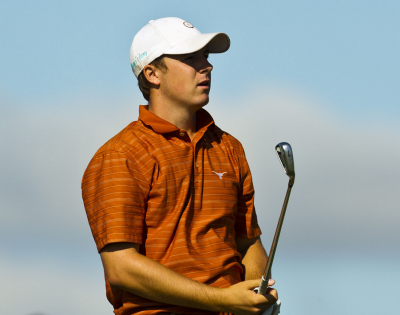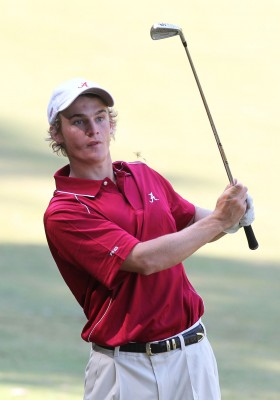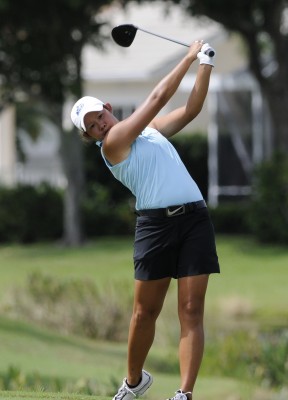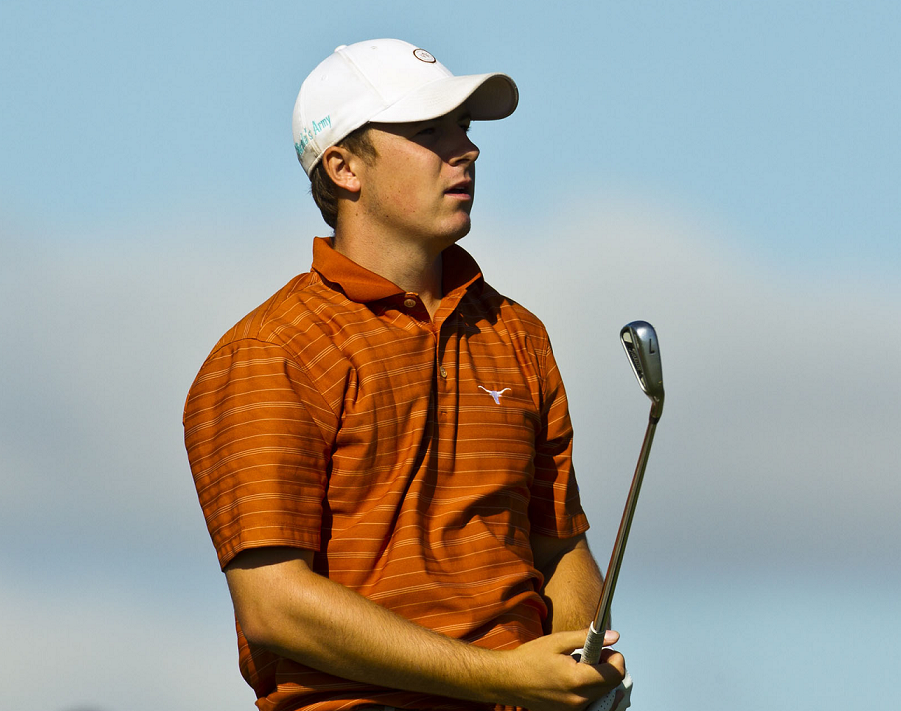
Some top college players have to make tough choices about turning pro or staying in school
By Jim Dover
Nobody will dispute the drive that most college golfers have to ultimately compete on the PGA and LPGA tours. But with the opportunities that top college players now have to compete on the professional level through various exemptions, the temptation to turn pro before finishing school is stronger than ever.

UCLA’s Patrick Cantlay was a prime example in 2011. Stories about the talented collegian more than holding his own against the best players in the world often included how much money he would have earned if he was playing as a professional. Cantlay is on record as saying he will stay all four years at UCLA, just as Oklahoma State star Peter Uihlein said before last season. Uihlein, however, recently gave up his final semester as a Cowboy to pursue his dream of playing professionally.
Here are recent storylines involving the textbook-toting crowd:
Jordan Spieth stayed in his home state of Texas and is the second-ranked college player as a freshman for the Longhorns behind teammate Dylan Frittelli. While it would have been a stretch to believe Spieth could skip school and compete on the PGA Tour, his recent results are impressive. The Isleworth Collegiate Invitational medalist also played this summer on the U.S. Walker Cup team and was a quarterfinalist at the U.S. Amateur. Combine that with two impressive finishes at the PGA Tour’s Byron Nelson Championship – a tie for16th in 2010 and a tie for 32nd in 2011 – and it could be sooner rather than later before Spieth embarks on a pro career.

Leaving one year early from Alabama, Bud Cauley began his professional career at the U.S. Open and subsequently made seven of eight cuts. That was enough money to obtain a PGA Tour card and skip Q-School, making him only the seventh player to accomplish that feat. A three-time All-American for the Crimson Tide, Cauley was a member of the winning 2009 U.S. Walker Cup team, which he lists as his biggest accomplishment in golf. As a young full-time member of the PGA Tour this year, he should have many more chances to add to his achievement list.
Patrick Cantlay could have jumped to the PGA Tour without a second thought after his four top- 25 finishes and one top 10 in 2011. His decision to stay in school did have one controversial blip when Cantlay played in the Frys.com Open in October instead of teeing it up for UCLA at the Nicklaus Invite at Muirfield Village. Cantlay, who has received a sponsor exemption for the Northern Trust Open at nearby Riviera Country Club this month, is likely to get more PGA Tour invitations as the year progresses. He already has an exemption to play in this year’s British Open at Royal Lytham by virtue of his amateur ranking.

Peter Uihlein, the 2010 U.S. Amateur champion, turned pro in December and will begin most of his professional career on the European Tour. Uihlein signed with Chubby Chandler’s International Sports Management Group, which also handles Lee Westwood and Charl Schwartzel, among others. Uihlein’s career could be put on hold if he doesn’t perform well in the seven sponsor exemptions he is allowed on the European Tour schedule. His record in PGA Tour events is three cuts made in six events. His top finish at a professional event was 48th at the 2011 British Open.
Pepperdine’s Danielle Kang had an impressive amateur record when she won U.S. Amateur titles in 2010 and 2011 but a less-than-spectacular exit from college after becoming academically ineligible her sophomore year. She turned pro after winning the 2011 U.S. Amateur and competed in five LPGA tournaments, with her best finish a tie for 49th at the British Open. Competing at LPGA Q-School also resulted in limited success as Kang finished in a tie for 39th for conditional status this season. If Kang has learned from her school of hard knocks, she definitely has the talent to succeed down the line.

If you haven’t heard of 16-time collegiate winner Sandra Changkija, it’s likely because she played her golf at tiny Nova Southeastern College, where she was the four-time Division II Player of the Year. Earning her LPGA Tour card on her first try at Q-School, Changkija proved you don’t necessarily have to compete at a big school to achieve big results. Changkija was competing with fellow teammate Taylor Collins, who failed to make the 72-hole cut but will have full status on the Futures Tour by virtue of qualifying for the final stage.
Leaving Texas after one year was a risky move for Rebecca Lee-Bentham, especially considering she had only one top-5 finish during her eight starts as a Longhorn. However, a determined Lee-Bentham earned her LPGA Tour card by carding a sensational 5-under-par 67 on the final day of Q-School to vault from 38th to a tie for ninth. Lee-Bentham’s feat was equaled by fellow Canadian Maude-Aimee Leblanc, who earned her card on her first attempt following a four-year career at Purdue.

Stephanie Kono might be the only golfer in history to have mixed emotions about earning her tour card. The UCLA senior had no intention of leaving school early, but a ninth-place finish at the LPGA Tour Qualifying School and some incorrect information from officials along the way resulted in her receiving her card. The three-time All-American handled the situation with class and spared the LPGA further embarrassment. UCLA coach Carrie Forsyth, who now must compete for the national title without her star player, was more critical of the LPGA and plans on addressing the issue at the National Golf Coaches Association meeting this year.

